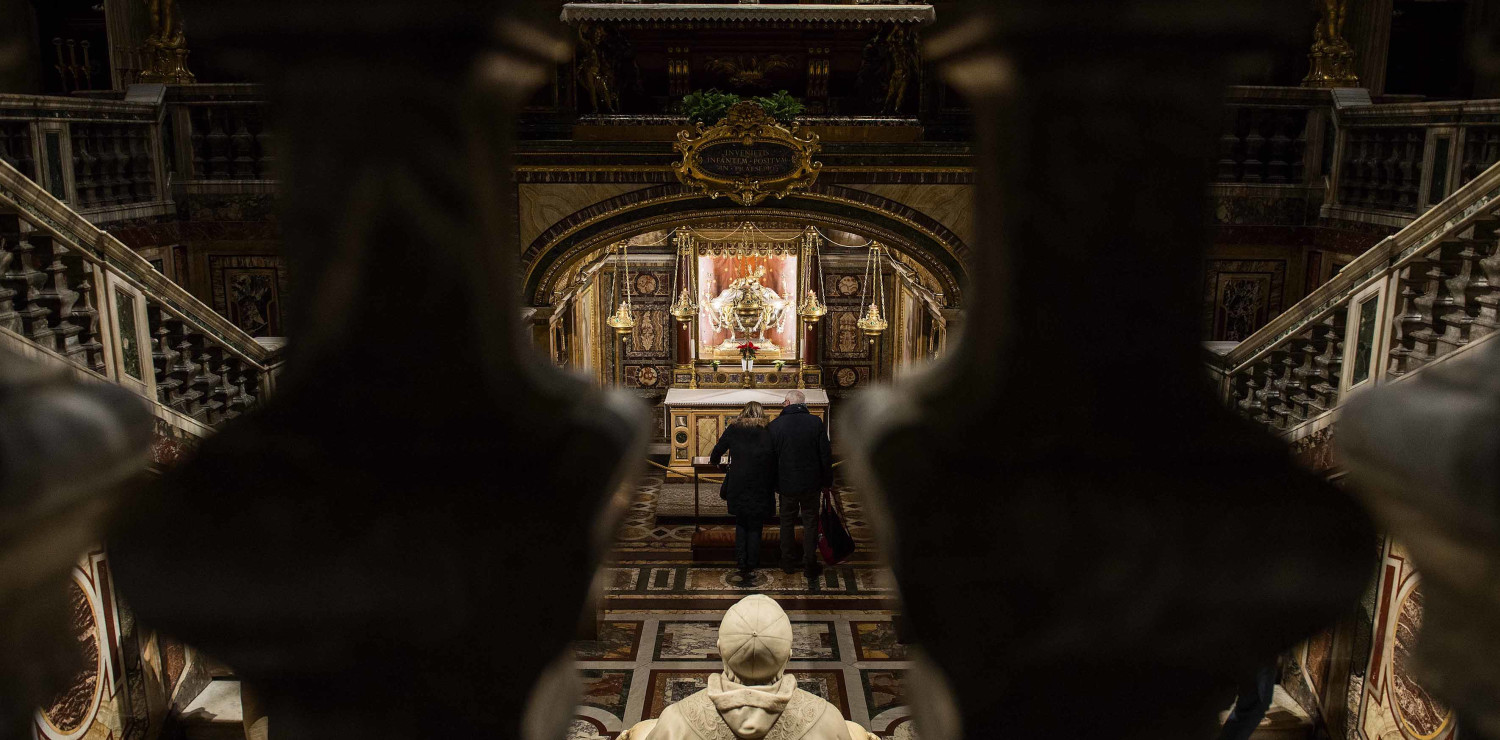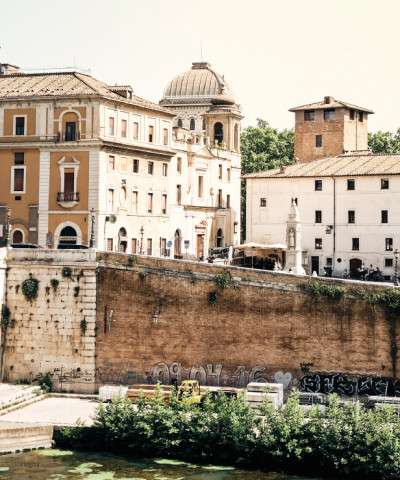10 things you don't know about Rome
Anecdotes and curiosities about the Eternal City
While lovers the world over are celebrating Valentine’s Day with candlelit dinners and assorted treats, the Romans go to church. To pray? Yes, but also to swear eternal love before the man himself, Saint Valentine. The skull of the bishop saint, who defied prohibitions to officiate at Christian weddings in pagan Rome, is displayed in the Basilica of Santa Maria in Cosmedin. Famous for the Bocca della Verità, the church is also home to the precious relic. And although there are doubts about its authenticity, popular belief has prevailed. So much so that the beautiful 8th-century display case is only revealed on 14 February, the anniversary of the saint’s martyrdom. The date coincided with the Roman festival of Lupercalia, also connected with love, but more carnal and carnivalesque.
There’s no surprise here; in Rome the most fanciful legends become truer than the truth itself. As happened with the Holy Cross, all because of an enterprising woman, St Helena, mother of the emperor Constantine, who decided to travel to Jerusalem to find the cross on which Jesus was crucified. Not only did she locate it, she even managed to ascertain its authenticity: when brought near to a dead man, the corpse came back to life. Part of the cross ended up in Rome where, in 325 AD, a special church was built to house it: the Basilica of the Holy Cross in Jerusalem. This relic was later joined by the Titulus Crucis, bearing the words Jesus the Nazarene King of the Jews; a nail and two thorns from the crown. Soil from Golgotha, brought here with the relics, is protected by a stone slab. The church became a place of pilgrimage with equal importance as the Holy Land.
 presepe più antico7
presepe più antico7But if we have the Holy Cross, what about the Holy Cradle? No sooner said than done. A fragment of the manger that was the newborn Jesus’ cradle is actually preserved in the church of Santa Maria Maggiore. The cradle is described by St Luke, and in the 15th century, Pope Sixtus III decided to reconstruct the site of the holy birth, thus creating the first nativity scene in history. It was enormously successful: thousands of faithful came from all over the world, and pilgrims to the Holy Land began competing to secure a holy relic. The outcome is that today there are five splinters of maple wood preserved in a display case decorated by Giuseppe Valadier with scenes of the Nativity, the Last Supper and the flight to Egypt. Are they all real? Who knows. Meanwhile Pope Gregory X took inspiration from St Francis’ living creche in Greccio and commissioned a stone Nativity scene, the first in history, by Arnolfo di Cambio. In the church of Santa Maria Maggiore, the architect and sculptor created the Holy Family, the Magi, the ox and the ass that in the flickering light of candles seem to come alive. There’s a scandalous story about the chapel commissioned by Portuguese nobleman Rodrigo Lopez da Sylva for the church of Sant’Isidoro in Via degli Artisti. Bernini was engaged to do the decoration, and he created two statues: Charity, generously offering her naked breasts, and Truth. Far too saucy for the Irish Franciscans who had owned the complex since the 16th century. In the 19th century the two muses were dressed in chaste tunics of painted bronze, removed during restoration work in 2002. While clothes were added to Bernini’s sculptures, Rubens had to install a copper shield to protect a 14th-century Madonna and Child. In fact, the fresco ended up in a public bath before being recovered and included in the great altarpiece the Flemish artist painted for the church of Santa Maria in Vallicella. Rubens’stroke of genius was to construct a contraption, the motorised painting, with an oval-shaped copper plate that moves up and down to cover and reveal the ancient image. Had enough of relics? Well, if you find yourself near Via del Banco in Santo Spirito, look out for the small archway leading to Via Paola. Here you’ll find the oldest Tiber flood marker (formerly at the nearby church of saints Celso and Giuliano), which refers to the flood of 7 November 1277, noting that when it happened the ‘church was absent’. In fact, the conclave had been in session in Viterbo since May, prior to electing Pope Nicholas III on 25 November.
 The great altarpiece painted by Rubens for the church of Santa Maria in Vallicella
The great altarpiece painted by Rubens for the church of Santa Maria in VallicellaIn Rome there’s even a special place for a cannonball. It’s in the middle of a 16th-century fountain in front of Villa Medici on the Pincian Hill. The story goes that it was Queen Christina of Sweden, a convert to Catholicism and Roman by adoption, who fired the cannon, to catch the attention of a painter or to call her guests to a hunt. The real things are the ball itself, which replaced a lily in the centre of the fountain, and the mark it made on the door of the villa. And there’s no shortage of marks on the Alchemy Gate in Piazza Vittorio. It was built in the second half of the 17th century by Massimiliano Savelli Palombara, marquis of Pietraforte and a keen student of esotericism, astrology and alchemy, who created a kind of laboratory to seek the philosopher’s stone and transform base elements into gold. A guest of his was said to have vanished, leaving a cloud of gold dust behind him. After that, the symbols were placed everywhere, but gold was never again created. But medicinal vinegar water might be even more valuable. It was sold in Campo dei Fiori and Pope Paul V even commissioned a fountain in Parioli. What remains today is the Arco degli Acetari, leading to a peaceful little courtyard, suspended between the Middle Ages and the 19th century.










